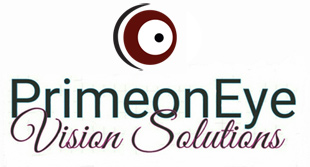Refractive Errors
All of us, more or less, we have heard about myopia, hyperopia, astigmatism and presbyopia. These terms describe the most significant refractive disorders of eyes.
What is myopia (nearsightedness)?
If you have myopia you can clearly see close objects, but distant objects are blurry. Myopia is caused by the eyeball being too long. Myopia occurs in different degrees from minimal to extreme. The more myopic you are the blurrier your vision is at a distance and objects will have to be closer to you so you can see them clearly.
What is hyperopia (farsightedness)?
If you have hyperopia, you can see distant objects clearly, but close ones are blurry. Hyperopia occurs when the eyeball is too short for the light rays to focus clearly on the retina.
What is astigmatism?
If you have an astigmatism, the surface of the eye (cornea) is not perfectly round, rather it is more oval and doesn’t allow the eye to focus clearly. The cornea is very important in helping the eye focus light rays on the retina. Astigmatism rarely occurs alone. It is usually accompanies myopia or hyperopia.
What is presbyopia?
If you have presbyopia, you have the loss of the ability to focus up close that occurs as you age. Most people are between 40 and 50 years when they realize for the first time that they can’t read objects close to them. The letters of the phonebook are “too small” or you have to hold the newspaper farther away from your eye to see it clearly. At the same time your ability to focus on objects that are far may remain normal.

These refractive disorders may be corrected if we manage to focus,with appropriate methods, the image of the object onto the retina. This is achieved either by adding lenses such as eyeglasses, contact or bifocal lenses or by altering tissue composition of the natural eye lenses (i.e. the cornea and crystalline lens), as is done with laser surgery and refractive lens exchange (RLE) surgery.
What is the best treatment for correcting refractive errors?
As in all choices in our lives, there are advantages and disadvantages for each treatment of refractive disorders. Each method is examined carefully and balanced with the expectations of each patient. Operating methods for myopia, hyperopia and astigmatism are safe procedures with low complication rate for the patient. Applying though massively any surgical medical method, the number of complaints increases.
Refractive surgery is at an excellent level in our country and usually the patient information is sufficient.
Consult us for more advice and help.
